Ooishi’s deciduous work is remarkable – and not just because his trees look good. In most cases he created his collection from scratch, by air-layering, grafting and careful wiring and cutback over the years. Although I don’t know the ages of the trees below, Ooishi suggested that trees like this can be developed from cuttings in roughly 30 years.

Japanese maple ‘Shishigashira’
Shishigashira Japanese maples are notoriously hard to ramify. The branches produce lots of buds but typically remain course. The tree above is uncharacteristically well-developed for its age.
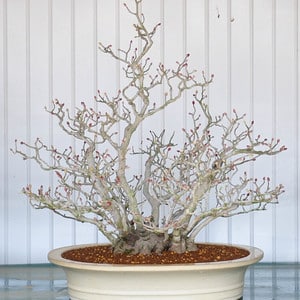
Corylopsis spicata
While not the most common of varieties, Corylopsis spicata, also known as winterhazel or spike winterhazel, is a great variety for bonsai. The trunk shows age well and the spring flowers are as beautiful as they are unusual.
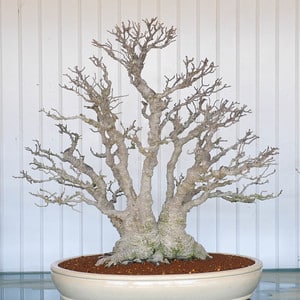
Ilex serrata
The Japanese winterberry produces very fine ramification and striking red berries. These characteristics make the variety a welcome addition to winter exhibits. Look for Ilex without scars on the trunk – healing large wounds can be difficult in old trees.
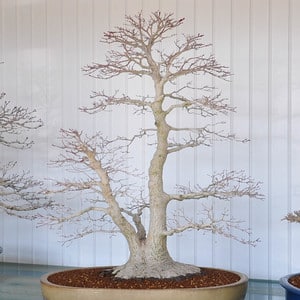
Japanese maple
This triple-trunk specimen has good taper, good roots and subtle movement. As the branches mature the tree’s character will continue to improve.
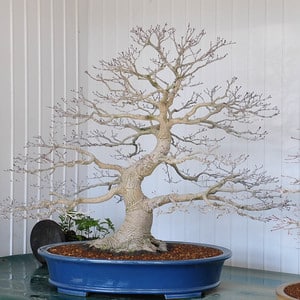
Japanese maple
This maple is also relatively young in training. While the trunk, roots and main branches are in place, time will bring further ramification and improve the nebari.
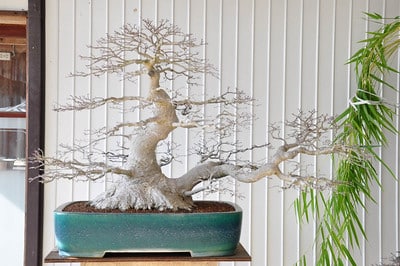
Japanese maple
This maple has a really fun trunk with taper you’re more likely to see in a trident maple or Japanese beech. Cascading bamboo shoots provide a nice contrast to the otherwise deciduous trees in Ooishi’s workshop.
Subscribe to Bonsai Tonight
New Posts Delivered Every Tuesday and Friday
David says
I always enjoy seeing photos of trees… really enjoy your blog!!
It’s incredible you could get a tree like these in 30 years. I think i’m gonna try this, but i don’t think it’s possible in Belgium… too much rain most of the year…
Keep posting trees from your visits to Japan, i love them 🙂
Best regards
David
Josef says
Hi Jonas,
Thanks for the stunning pics! There appears to be a yellow particle mixed in with the akadama…is this something like the Japanese version of osmocote? Best regards!
xwires says
Hi Josef – the yellow particles are a form of Japanese volcanic soil, likely pumice, though I don’t remember precisely what they were. They hold less water than akadama but are lightweight and don’t breakdown as fast.